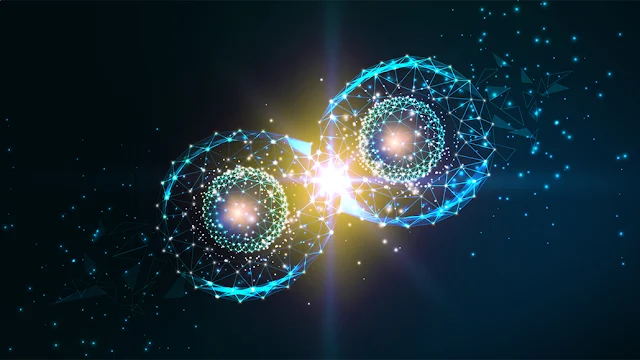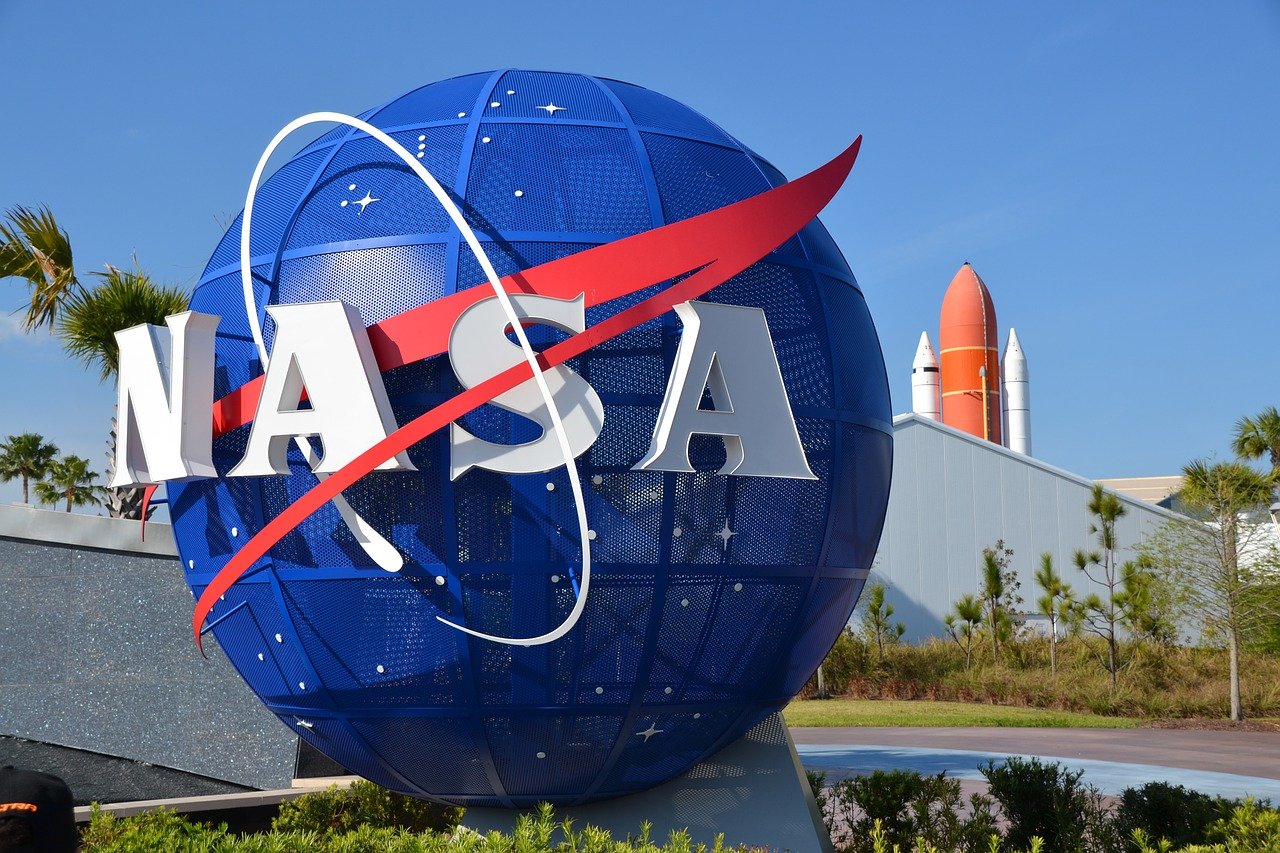National Quantum Science And Technology Symposium Held Online Jul. 26-Aug. 3 Features India’s Quantum Experts
July 26, 2021
HYDERABAD, India, July 26, 2021 — The National Quantum Science and Technology Symposium (NQSTS), organized by IIIT Hyderabad, Quantum Ecosystems Technology Council of India, IEEE Quantum Initiative, in association with PSA, Govt of India is being held online from 26 July – 3 August 2021.
Through talks delivered by some of India’s best quantum experts from government, academia and industry, the symposium will cover diverse aspects of the field and provide an overview of the scope and impact of quantum computing in India.
NQSTS launched the Quantum Ecosystems and Technology Council of India (QETCI), headed by Reena Dayal, which will work closely with various members of quantum ecosystems across government, academia, industry, startups and investors to accelerate the quantum ecosystem in India.
The symposium features several eminent keynote speakers – Prof Vijay Raghavan, PSA to Govt of India; Prof K Sivan, Chairman ISRO; Ajay Prakash Sawhney, Secretary MEITY; Dr KR MuraliMohan, Mission Director NM-ICPS, DST; Jayesh Ranjan, Principal Secretary, IC&T Govt of Telangana and Prof P J Narayanan, Director IIIT Hyderabad. It also includes several keynote speakers from Microsoft, Amazon, IBM, QNU Labs, TCS and IQM.
Speaking at the inauguration, Prof. P J Narayanan, Director, IIITH, said, “Quantum computing is a truly futuristic area with huge potential that we must invest in today to reap benefits in the near future. IIIT Hyderabad had recognized the importance of this area and started research in related areas about 10 years. Our group today has 6 faculty members with mix of expertise in Physics, Mathematics, Computer Science, etc. We have a productive group consisting of Masters, PhD, as well as B.Tech students conducting research on different aspects of quantum computing, producing papers in journals and conferences, etc. To give greater push to this area, we have formed a Centre for Quantum Science & Technology (CQST) and hope to develop it into a major national and international player in the area of Quantum Information Sciences, from creating quantum computers to developing quantum computing models to quantum algorithms and their applications to various areas like Healthcare, Sciences, Machine Learning, etc. It is only natural that IIIT Hyderabad stay ahead in these areas for years to come, just as we have done in other areas of computing and communications.”
The symposium organising committee was led by Prof Indranil Chakravarty. More details on the symposium are available at https://nqsts.com
About IIIT-Hyderabad
The International Institute of Information Technology, Hyderabad (IIITH) is an autonomous research university founded in 1998 that focuses on the core areas of Information Technology, such as Computer Science, Electronics and Communications, and their applications in other domains through inter-disciplinary research that has a greater social impact. Some of its research domains include Visual Information Technologies, Human Language Technologies, Data Engineering, VLSI and Embedded Systems, Computer Architecture, Wireless Communications, Algorithms and Information Security, Robotics, Building Science, Cognitive Science, Earthquake Engineering, Computational Natural Sciences and Bioinformatics, Education Technologies, Power Systems, IT in Agriculture and e-Governance.
-----------------------------------------------------------------------------------
தேசிய குவாண்டம் அறிவியல் மற்றும் தொழில்நுட்ப கருத்தரங்கம்
ஆன்லைனில் ஜூலை 26-ஆக. 3 இந்தியாவின் குவாண்டம்
நிபுணர்களின் அம்சங்கள்
ஜூலை 26, 2021
ஹைதராபாத், இந்தியா, ஜூலை 26, 2021 - ஐஐஐடி ஹைதராபாத்,
குவாண்டம் ஈகோசிஸ்டம்ஸ் டெக்னாலஜி கவுன்சில் ஆஃப் இந்தியா,
ஐஇஇஇ குவாண்டம் முன்முயற்சி, பிஎஸ்ஏ, இந்திய அரசு
இணைந்து ஏற்பாடு செய்த தேசிய குவாண்டம் அறிவியல்
மற்றும் தொழில்நுட்ப கருத்தரங்கம் (NQSTS) 26 முதல்
ஆன்லைனில் நடைபெறுகிறது. ஜூலை - 3 ஆகஸ்ட் 2021.
அரசு, கல்வித்துறை மற்றும் தொழில்துறையைச் சேர்ந்த
இந்தியாவின் சிறந்த குவாண்டம் நிபுணர்களால் வழங்கப்பட்ட
பேச்சுவார்த்தைகளின் மூலம், கருத்தரங்கம் பல்வேறு
துறைகளை உள்ளடக்கியது மற்றும் இந்தியாவில்
குவாண்டம் கம்ப்யூட்டிங்கின் நோக்கம் மற்றும்
தாக்கம் பற்றிய கண்ணோட்டத்தை வழங்கும்.
NQSTS ஆனது குவாண்டம் சுற்றுச்சூழல் மற்றும்
தொழில்நுட்ப கவுன்சில் ஆஃப் இந்தியாவை (QETCI),
ரீனா தயாள் தலைமையிலானது, இது இந்தியாவில்
குவாண்டம் சுற்றுச்சூழல் அமைப்பை துரிதப்படுத்த அரசு,
கல்வித்துறை, தொழில், தொடக்க மற்றும் முதலீட்டாளர்கள்
உட்பட பல்வேறு குவாண்டம் சுற்றுச்சூழல் அமைப்புகளுடன்
நெருக்கமாக வேலை செய்யும்.
இந்த கருத்தரங்கில் பல முக்கிய சிறப்பு பேச்சாளர்கள்
இடம்பெற்றுள்ளனர் - பேராசிரியர் விஜய் ராகவன்,
PSA to India of Government; பேராசிரியர் கே சிவன்,
தலைவர் இஸ்ரோ; அஜய் பிரகாஷ் சாஹ்னி, செயலாளர் MEITY;
டாக்டர் கேஆர் முரளிமோகன், மிஷன் இயக்குனர்
என்எம்-ஐசிபிஎஸ், டிஎஸ்டி; ஐசி அண்ட் டி தெலுங்கானா
அரசின் முதன்மை செயலாளர் ஜெயேஷ் ரஞ்சன் மற்றும்
ஐஐடி ஐதராபாத் இயக்குனர் பேராசிரியர் பி ஜே நாராயணன்.
இது மைக்ரோசாப்ட், அமேசான், ஐபிஎம், கியூஎன்யூ லேப்ஸ்,
டிசிஎஸ் மற்றும் ஐக்யூஎம் ஆகியவற்றிலிருந்து பல முக்கிய
பேச்சாளர்களை உள்ளடக்கியது.
தொடக்க விழாவில் பேசிய பேராசிரியர் பி ஜே நாராயணன், ஐஐஐடிஎச், "குவாண்டம் கம்ப்யூட்டிங் என்பது எதிர்காலத்தில் பலனைப் பெற இன்று நாம் முதலீடு செய்ய வேண்டிய மிகப்பெரிய சாத்தியக்கூறுகளைக் கொண்ட ஒரு உண்மையான எதிர்காலப் பகுதி. ஐஐடி ஐதராபாத் இந்தப் பகுதியின் முக்கியத்துவத்தை உணர்ந்து, 10 வருடங்கள் தொடர்புடைய பகுதிகளில் ஆராய்ச்சியைத் தொடங்கியது. எங்கள் குழுவில் இன்று இயற்பியல், கணிதம், கணினி அறிவியல் போன்றவற்றில் நிபுணத்துவம் கொண்ட 6 ஆசிரிய உறுப்பினர்கள் உள்ளனர். எங்களிடம் முதுநிலை, பிஎச்டி, மற்றும் பி.டெக் மாணவர்கள் அடங்கிய ஒரு உற்பத்தி குழு உள்ளது. பத்திரிகைகள் மற்றும் மாநாடுகள், முதலியவற்றில் இந்த பகுதிக்கு அதிக உந்துதல் அளிக்க, நாங்கள் குவாண்டம் அறிவியல் & தொழில்நுட்ப மையத்தை (CQST) உருவாக்கி, குவாண்டம் தகவல் அறிவியல் பகுதியில் ஒரு பெரிய தேசிய மற்றும் சர்வதேச வீரராக உருவாக்கும் என்று நம்புகிறோம். குவாண்டம் கம்ப்யூட்டர்கள் குவாண்டம் அல்காரிதம்கள் மற்றும் ஹெல்த்கேர், சயின்சஸ், மெஷின் லேர்னிங் போன்ற பல்வேறு பகுதிகளுக்கு அவற்றின் பயன்பாடுகளை உருவாக்க குவாண்டம் கம்ப்யூட்டர்கள். கணினி மற்றும் தகவல்தொடர்பு பகுதிகள். "
கருத்தரங்கு ஏற்பாட்டுக் குழுவுக்கு பேராசிரியர் இந்திரனில் சக்கரவர்த்தி தலைமை வகித்தார்.
சிம்போசியம் பற்றிய கூடுதல் விவரங்கள்
https://nqsts.com இல் கிடைக்கின்றன
ஐஐஐடி-ஐதராபாத் பற்றி
இன்டர்நேஷனல் இன்ஸ்டிடியூட் ஆப் இன்ஃபர்மேஷன் டெக்னாலஜி,
ஹைதராபாத்
(IIITH) என்பது ஒரு தன்னாட்சி ஆராய்ச்சி பல்கலைக்கழகம் ஆகும்,
இது கணினி அறிவியல்,
மின்னணுவியல் மற்றும் தகவல் தொடர்பு போன்ற தகவல் தொழில்நுட்பத்தின் முக்கிய பகுதிகள் மற்றும் இடை-ஒழுங்கு ஆராய்ச்சி மூலம் மற்ற களங்களில் அவற்றின் பயன்பாடுகளில் கவனம் செலுத்துகிறது.
அதிக சமூக தாக்கத்தை கொண்டுள்ளது.
விஷுவல் இன்ஃபர்மேஷன் டெக்னாலஜிஸ்,
மனித மொழி தொழில்நுட்பங்கள்,
டேட்டா இன்ஜினியரிங்,
விஎல்எஸ்ஐ மற்றும் உட்பொதிக்கப்பட்ட சிஸ்டம்ஸ்,
கம்ப்யூட்டர் ஆர்கிடெக்சர்,
வயர்லெஸ் கம்யூனிகேஷன்ஸ்,
அல்காரிதம்கள் மற்றும் தகவல் பாதுகாப்பு,
ரோபாட்டிக்ஸ்,
பில்டிங் சயின்ஸ்,
காக்னிட்டிவ் சயின்ஸ்,
பூகம்ப பொறியியல்,
கம்ப்யூட்டேஷனல் இயற்கை அறிவியல் மற்றும் பயோ இன்ஃபர்மேடிக்ஸ் ஆகியவை அதன் ஆராய்ச்சி களங்களில் சில.
கல்வி தொழில்நுட்பங்கள், சக்தி அமைப்புகள்,
விவசாயத்தில் ஐடி மற்றும் மின் ஆளுமை.





